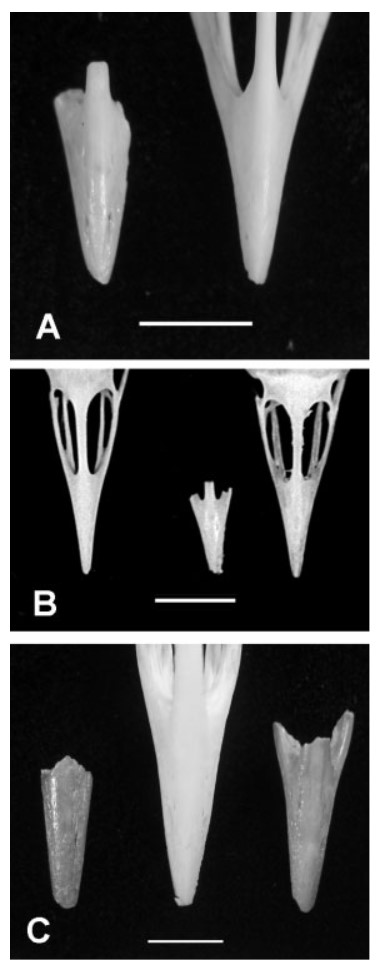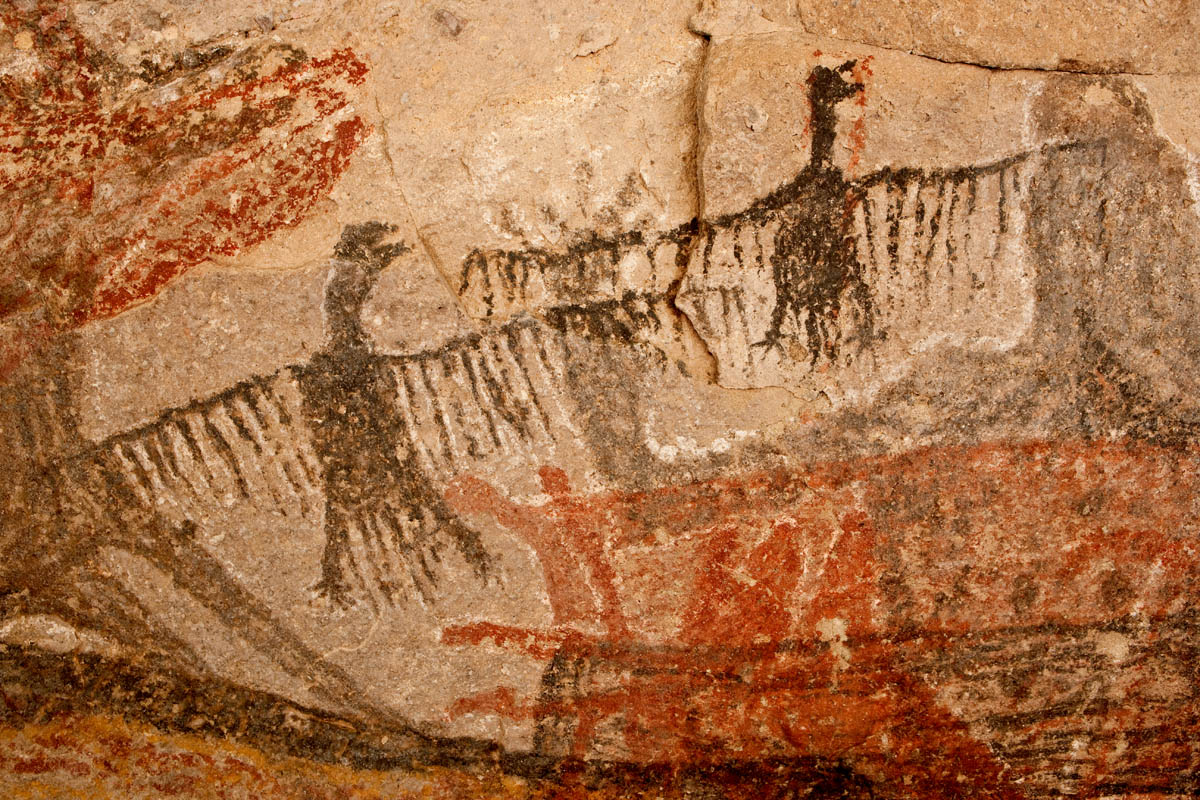There has never, in the course of human history, been a world without birdsong.
Paleo-ornithologists have found fossils of blackcaps from the Pleistocene. [Britain] belonged to birds well before it belonged to Cheddar Gorge Man. Richard Smyth, in a sentence I find both moving and poignant, has written that 'no human was ever born into a birdless world'. And no human has ever lived in a world without the buoyant melody of a blackcap song, the chiffchaff shouting its name over and over. Because of this, to me, birds operate on two scales of time. On the one hand, species are impossibly old, literal living dinosaurs, often barely changing. And on the other hand, individual birds are so vitally alive in the present, living fast, singing beautifully, raising their broods and dying young - and it is all over so quickly. The scale of the species is almost geological in breadth; the scale of the individual is the gap it flits between from branch to branch. The Eternal Season, pg 22
Fossils and subfossils of the blackcap have been found in a number of European countries; the oldest, dated to 1.2–1.0 million years ago, are from the Early Pleistocene of Bulgaria.[9][10] Fossils from France show that the genus Sylvia dates back at least 20 million years.[11]
Human evolution is the lengthy process of change by which people originated from apelike ancestors. Scientific evidence shows that the physical and behavioral traits shared by all people originated from apelike ancestors and evolved over a period of approximately six million years.
One of the earliest defining human traits, bipedalism -- the ability to walk on two legs -- evolved over 4 million years ago. Other important human characteristics -- such as a large and complex brain, the ability to make and use tools, and the capacity for language -- developed more recently. Many advanced traits -- including complex symbolic expression, art, and elaborate cultural diversity -- emerged mainly during the past 100,000 years. https://humanorigins.si.edu/education/introduction-human-evolution
First things first: A “human” is anyone who belongs to the genus Homo (Latin for “man”). Scientists still don’t know exactly when or how the first humans evolved, but they’ve identified a few of the oldest ones.
One of the earliest known humans is Homo habilis, or “handy man,” who lived about 2.4 million to 1.4 million years ago in Eastern and Southern Africa. Others include Homo rudolfensis, who lived in Eastern Africa about 1.9 million to 1.8 million years ago (its name comes from its discovery in East Rudolph, Kenya); and Homo erectus, the “upright man” who ranged from Southern Africa all the way to modern-day China and Indonesia from about 1.89 million to 110,000 years ago. https://www.history.com/news/humans-evolution-neanderthals-denisovans
.—Seven living species of passerines are identified or tentatively identi- fied from the early Pliocene Fox Canyon locality (4.3–4.8 mya), Rexroad Formation, Meade Basin, southwestern Kansas. All seven species occur in Kansas today, primar- ily as winter residents or transients, and their migratory behavior may extend to the early Pliocene as well. A review of all known passerines from the Neogene of North America indicates that many modern taxa began to appear in the early Pliocene, much earlier than previously believed. This fossil evidence agrees with some mitochondrial DNA analyses for the estimated age of divergence for living species of longspurs (Calcarius lapponicus and C. mccownii), but similar estimates for the divergence of C. ornatus using cytochrome-b analyses is at least 3 my younger than indicated by the fossil evidence. The fossil songbirds, as well as other vertebrate taxa from the Meade Basin, also indicate a paleoenvironment of short-grass prairie and shrubland with wetlands and ponds nearby, similar to that found in the area today. This prairie–steppe habitat first appeared in the Meade Basin by the early Pliocene and remained relatively stable until the Pleistocene, when it periodically appeared and disappeared with climate change. High seasonal productivity associated with this habitat in the early Pliocene may have promoted migratory behavior and specia- tion events in songbirds during a period of relative climatic stasis.

Fᄐᄈ. 1. (A) Dorsal view of the bill of Mimus polyglottus [Northern Mockingbird] (USNM 611204; right) compared with the fossil from Fox Canyon (UM 52094; left) referred to this species. (B) Dorsal view of the bill of male Anthus spragueii (USNM 344535; right) and A. rubescens (USNM 611029; left) compared with the fossil from Fox Canyon (UM 52145; middle) referred to Anthus cf. A. spragueii. (C) Dorsal view of the bill of Sturnella neglecta (USNM 611525; middle) compared with the fossils from Fox Canyon (UM 52089, left; UM 52088, right) referred to Sturnella cf. S. neglecta. Scale bar = 5 mm in all photos.
https://watermark.silverchair.com/auk85.pdf?token=AQECAHi208BE49Ooan9kkhW_Ercy7Dm3ZL_9Cf3qfKAc485ysgAAA04wggNKBgkqhkiG9w0BBwagggM7MIIDNwIBADCCAzAGCSqGSIb3DQEHATAeBglghkgBZQMEAS4wEQQMlnUJfXx5PUMRktdiAgEQgIIDARjA5PXdkYdhPF_IIDw4Tnh7S1WGj1dkRv9KNaAjVFO9QaKPSE9_qkPzhnT3pbMItjyCBmL9QuROSfK08rCnYM-P1lBmE9vHFMkr2P1U9r6JAjmYjWY79APyfiAaOmv5uflyl1035WI9wQQGoSA1Gic7PIqdw9TdlhKNCz_-wPPs5WB05NS4V0C4kT7Dm86manSyrX9j5nwJUDFE_PlNVAw6tDehzNyf6nsJ5e5zsif1dC5EDKV2Xt6kEw8p2U9KnDRF0weZB_HUwyGBzKyIcH1Q7juquyopJMk0Gs--6bKdqaBqS-9Zq9vxa2cddxu9QXxuqDjfNXM8i6rNSHDl50mftc6cVgiE9dyW94xQjDiLetrbyzZCkpqGutmrjz7j2dlmRqHKH0MHnFIw_5mNSF06Q9C0DLpzQHBthWJYq89b-jCDmQRZqH98z6uQ4RUMmUjRmpq4a0A7OON6Ehgv9RpbOFD3varLe3u-FkwMFsQdJ2fcHPyNDc66F7b3I79xUxMh5ON5kkxL0kainEnn0otyKJWYA0208ZWfClwWQ1vVH8cufaerGqFIgnXWMDIS83cWKIWHETTAv7IeuGR1M7pQSjZ6QBwNZSZfUQQKDYRWu5g04jDPqOCNH14BX3Cfdhaeceoiic4iB51cYFr0YSqUQIBmHKk-lXKsIzZVZgbwu1NrV4qwHt4ajGlV7gvn8lCwZn8xTS2HWQttSD78fXEdCS70nCdughEsqlnYS_DA2j0_lYmTZfh17_bEfcIXqlNJYOgjd0oTb3InOaA51oM1zSEvskD9AstLHA36kjWj6sgrD8YMT8NGkVQyiQe1lySeLGtzEnB7g0OFUTT5DSCuF6-RRyxdFhXM42LYj5aNCWIMQsHJ5PA6XpwJNBPmLp3EVYWeeqk2npreyx9TUj8yE-aDgTAG8Uj2KNww5hNUOuhl1pkAxpXXBpG4ZjwLnOUdq70O1_TPkdSdD_tfRSvEA9ZoCQEw0OqMOkHKXc2KM1NskhhHT2ttHS4mQdpaCu4
i am because a little bird knows me.

